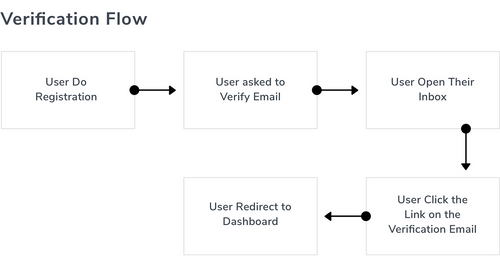In the fast-paced digital landscape, ensuring the security of user accounts and validating user identities is paramount. One of the cornerstones of this process is creating a seamless and efficient email verification flow. This comprehensive guide will walk you through the intricacies of designing and implementing an email verification flow that not only safeguards your application but also enhances the user experience.
Understanding the Significance of Email Verification
Email verification is a vital step in the user registration process. It serves multiple essential purposes:
User Authentication: Ensures that users are who they claim to be by confirming their possession of the provided email address.
Security: Protects against fraudulent account creation, reducing the risk of unauthorized access and malicious activity.
User Engagement: Sets the stage for clear communication between the application and the user, fostering trust and engagement.
Designing an Effective Email Verification Flow
Step 1: Registration
The email verification flow typically begins with the user registration process. During this phase, gather essential user information, including the email address. Here's what you need to consider:
Collect Minimal Data: Request only the necessary information from users to streamline the registration process.
Email Validation: Implement real-time email validation to ensure the format of the email address is correct.
Step 2: Sending Verification Emails
Once the user registers, it's time to send a verification email. Key considerations include:
Immediate Dispatch: Send the verification email promptly after registration to minimize user wait time.
Personalization: Craft a personalized email that clearly communicates the purpose of the message and includes the user's name.
Step 3: User Interaction
The success of your email verification flow often depends on how users interact with the verification email:
Clear Instructions: Provide concise and straightforward instructions on how to verify the email address.
Call to Action: Include a prominent call-to-action (CTA) button that takes users directly to the verification page.
Step 4: Verification Page
The verification page is where users confirm their email addresses. Best practices for this crucial step include:
Mobile Responsiveness: Ensure that the verification page is mobile-friendly for users on various devices.
Real-Time Feedback: Offer real-time feedback, such as instant verification confirmation.
Step 5: Post-Verification
After successful email verification, consider these actions:
Welcome Message: Greet users with a warm welcome message and provide an overview of the application's features.
Engagement Prompts: Encourage users to complete their profiles or explore the app's core functionality.
Common Challenges in Email Verification Flows
Challenge 1: Email Delivery Issues
Emails may not always reach users' inboxes due to spam filters or incorrect email addresses. Address this by:
Email Service Provider: Use a reputable email service provider to improve deliverability.
Verification Status: Clearly communicate the verification status, allowing users to request a new verification email if needed.
Challenge 2: Handling Invalid Emails
Not all email addresses provided during registration are valid. Strategies to address this challenge include:
Syntax Validation: Implement syntax validation to catch common mistakes in email addresses.
User Guidance: Offer guidance to users when their email addresses are invalid, explaining how to correct the issue.
Enhancing Security and User Experience
A well-designed email verification flow can significantly impact both security and user experience:
Security Enhancement: By ensuring that users are genuine and have access to the provided email address, you reduce the risk of fraudulent activities.
User Trust: A seamless verification process builds trust, making users more likely to engage with your application.
Reduced Friction: A user-friendly flow minimizes friction during registration, leading to higher conversion rates.
Conclusion
Crafting the perfect email verification flow is a pivotal step in enhancing your application's security and user engagement. By following the best practices outlined in this guide, you'll create an efficient and user-friendly email verification process that fosters trust, encourages user interaction, and safeguards your platform against potential threats.



